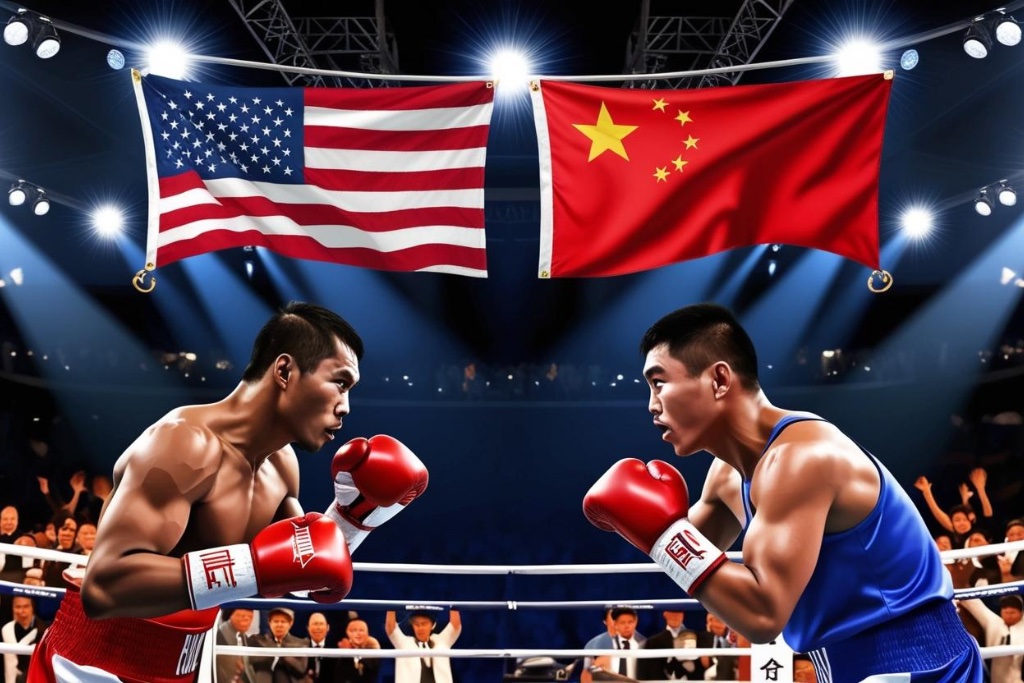Few policies in a globally linked economy have the kind of impact on the markets as taxes. The direct effects of American tariffs on Chinese imports could seem to be limited to those two nations. But as Australian share market investors have often witnessed, these moves can rock our local bourse and generate both possibilities and hazards.
This post will examine how US-China tariff tensions affect Australian shares, identify particular sectors and stocks most vulnerable, and discuss how momentum investing can enable regular investors to negotiate these choppy seas.
Tariffs and Australian Stocks
Usually employed as a tool to defend home businesses or apply economic pressure, tariffs are really taxes on imported goods. The cost of those goods for American consumers and companies increases when the US taxes Chinese imports. Usually responding with tariffs of its own, China’s actions affect US exports.
Even though we are not actively participating in this activity, Australia is still highly exposed. This is the rationale:
Particularly in commodities including iron ore, coal, and agricultural goods, China is Australia’s biggest trading partner.
The Australian economy is quite heavily geared for world trade.
Many ASX-listed firms either depend on Chinese supply chains, export to China, or are subject to changing commodity prices depending on Chinese demand.
Thus, tariff increases between the US and China generate uncertainty, disturb supply chains, and can lower demand for Australian exports—all of which can negatively impact Australian stocks.
Industries Most Most Under Risk
Particularly sensitive to US-China tariffs are three Australian industries:
Resources—especially basic metals and iron ore—especially
Food exports and agricultural development
Manufacturing companies with Chinese supply chains
Two ASX-listed businesses that best show this risk are Treasury Wine Estates (ASX: TWE) and Fortescue Metals Group (ASX: FMG).
1. ASX: FMG Fortescue Metals Group
The third-largest iron ore miner in Australia, Fortescue Metals, gained from China’s steel manufacturing surge. With US tariffs on Chinese products, the Chinese economy will inevitably slow down as export demand declines. Reduced steel output and less demand for iron ore follow from these developments as well.
FMG’s share price showed notable fluctuation during a previous tariff episode in 2018–2019. Investors were trapped between rising iron ore prices brought on by Brazilian supply interruptions and worries that slower industrial activity brought on by tariffs will dampen Chinese demand.
The reason FMG is vulnerable is:
Ninety percent of its income originates from China.
It is sensitive to swings in iron ore prices, which are sentiment-driven and move greatly depending on macroeconomic concerns.
2. Treasury Wine Estates ASX: TWE
TWE, the owner of Penfolds and other premium wine labels, is a classic case of tariff risk. In response to political unrest, China taxed Australian wine at up to 212%. Although this episode had nothing to do with current US tariffs, it highlights how severely geopolitics and trade restrictions may affect exporters.
Any slowdown in Chinese demand, for example, from US tariffs that reduce general economic activity, can harm businesses like TWE even before China’s direct taxes on Australian wine. The company made significant investments in developing its Chinese distribution network; hence, unexpected demand shocks resulted in margin pressure and inventory write-downs.
The reason TWE was vulnerable is:
TWE found its most profitable growth market in China.
Being discretionary, its premium products are vulnerable to consumer mood and economic downturns.
How Momentum Investing Benefits
Momentum investing is predicated on the theory that, until they stop, stocks trending strongly in one direction often continue to do so. In a turbulent macroeconomic climate moulded by tariffs, where principles can be difficult to forecast but pricing movements provide hints about investor attitude, it is especially helpful.
In this situation, momentum investing can be applied as follows:
Track sector leaders: List companies in impacted industries (such as FMG in resources or TWE in consumer discretionary) and track their price strength against the index overall.
Apply technical instruments. Early trend changes may be shown by indicators such as relative strength index (RSI), moving averages, and MACD (moving average convergence divergence).
Following macro signals: Add news flow to price momentum. It could be time to pull out if tariffs are rising and a stock shows poor momentum.
Practice self-discipline: Momentum investment is best served by discipline. Often a sign to move on is a stock showing continuous relative underperformance or breaking below a major moving average.
Final Notes: Get ready; avoid predicting.
Nobody can forecast with certainty changes in trade policy. Understanding which industries are most vulnerable and implementing a flexible approach like momentum investing will help investors be ready for them, though.
The modern world economy is increasingly shaped by tariffs, particularly from the US on China. Australian investors have to be vigilant about how these decisions impact our trade-dependent companies. Whether your stock is an exporter like TWE or a miner like FMG, the secret is to combine macro understanding with disciplined execution.
Momentum investing provides a timely prism through which to view the market and respond with confidence in a world when news breaks quicker than principles can change.
A subscription to Signal Savvy Investor can help identify which quality stocks are showing increasing or decreasing momentum and filter the investment landscape.
Note: This material is only for informative purposes; it does not provide financial guidance. Before deciding what to invest in, always do your investigation or speak with a licenced financial counsellor.

